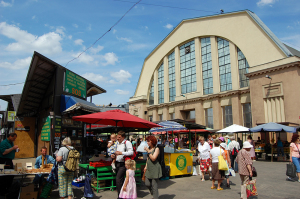New restaurants, star chefs, local produce and deep-rooted culinary traditions make the Baltic Sea region ideal for the culinary traveler. Unique and delicious local produce have allowed the Baltic cities of Hamburg, Warsaw, Riga, Helsinki and St. Petersburg to produce specialties only found in this special region of Europe.
Four times a year Helsinki becomes one large restaurant; on Restaurant Day the city’s licensing laws are lifted and anyone can “open a restaurant” for the day. Hundreds of pop-up restaurants appear throughout Helsinki from star chef food stands to tasty dinner parties in local apartments.
The first Restaurant Day was held on May 21, 2011 and included 45 restaurants, today over 38,000 restaurateurs have operated popup restaurants and have served an estimated 1,000,000 customers.
The next Restaurant Day is November 15, 2014.
Warsaw has long been known as one of the coolest cities in Europe and recently it is stepping into the global culinary scene with top restaurants and star chefs. In restaurants like Atelier Amaro, Tamka 43, Opas?
y Tom and Sowa i Przyjaciele Polish cuisine gets a modern twist and wows diners. The “celebrity chef” is also a new culinary phenomenon in Poland, chefs like Wojciech Modest Amaro and Karol Okrasa have restaurants and cooking shows and are quickly becoming household names in Poland.
Riga is home to one of the largest food markets in Europe: the Riga Central Market is located just steps from the Old Town on the banks of the Daugava River. The market is visited daily by over 80,000 people and is a popular place for local delicacies like fresh and smoked fish, marinated and pickled vegetables, Baltic fruit, milk and cheese, as well as country bread, honey and herbs.
Known the world-over for amazing seafood, Hamburg is also home to one of the tastiest pastries on the planet: the Franzbrötchen.
This small, sweet pastry is baked with layers of butter and cinnamon and occasionally chocolate or raisins are added.
It is a perfect and quick breakfast treat or enjoyed with a traditional coffee in the afternoon. According to historical tradition, former Hamburgers produced a longish Franzbrot (German for ‘French bread’), which resembled the baguette. Legend has it that a baker in Hamburg had once prepared such a Franzbrot in a pan of fat, which is considered the origin of the contemporary Franzbrötchen.
The Russian Vodka Museum is the only museum in the world dedicated to the history and variety of Russia’s national drink. Visitors can taste from a selection of 213 Russian vodkas in this museum that is housed in the 15th-century monastery where monks distilled the first vodka. During the guided tour guests will learn about vodka’s origin, Russian dining traditions and Russia’s vodka kings. Connected to the museum is Russian VodkaRoom No. 1 which was recently voted best Russian restaurant in St. Petersburg by TimeOut Magazine. Diners can enjoy a traditional Russian meal and sample local dishes like pickles and butterbrots with Salo and Baltic anchovy and salmon.
The ONE Baltic Sea Region, www.onebsr.eu

